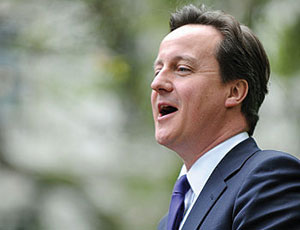The U.K.’s construction sector found some solace in the Oct. 25 publication of the country’s first national infrastructure development plan. It was announced a few days after the government outlined huge cuts in infrastructure and other public budgets aimed at eliminating its deep budget deficit.

How far the U.K.’s six-month-old coalition government and its conservative prime minister, David Cameron, will go to cut the deficit is shown by their willingness to pull back on needed road, bridge and transit spending.
Infrastructure was among the “important priorities” listed by George Osborne, the government’s chief finance minister, when he announced his budget allocations for the next four years on Oct. 20.
Yet he handed the Dept. for Transport an 11% capital-spending cut, in real terms, by 2014-15. Annual budget reductions for other departments range from about 7% to over 50%. Only the three departments dealing with health, education and foreign aid will see their budgets rise.
As a result of the cuts, 490,000 public-sector jobs will be terminated in the next four years, forecasts the independent Office for Budget Responsibility, created by the new government. A similar number of private-sector jobs, which provide government services, also will go, warns the consultant PricewaterhouseCoopers (PwC), London.
The new austerity regime follows Osborne’s Comprehensive Spending Review, which he launched soon after the Conservative and Liberal Democrat parties formed a coalition government this May. The cuts will eliminate the government’s structural budget deficit by 2014-15, he claims. Osborne values the deficit at $157 billion.
No other country has taken up deficit reduction with the single-mindedness of the British. The cuts have sparked heated debate on how the U.K.’s weakly recovering economy will react. Most commentators agree on the need to cut borrowing, but there is no consensus on the pace of cutting.
“We certainly need to listen to the best economists in the world,” says Vince Cable, secretary of state in the Dept. of Business, Innovation and Skills. “I think they are rather divided.”
There is less doubt about the consequences for the infrastructure sector. Construction will be among the “hardest-hit sectors,” forecasts John Hawksworth, PwC’s chief economist.
The Dept. of Transport immediately canceled seven large highway projects, some of them under procurement. “It is highly regrettable … that schemes in which considerable time and money have already been invested are not to go ahead,” complains Rosemary Beales, national director of the Civil Engineering Contractors Association, London.
CECA values the lost contracts at over $2 billion.
However, Beales welcomes the government’s decision to reduce infrastructure spending by $3.6 billion a year less than it had planned in this June’s preliminary budget report. CECA calculates the June cut in capital spending would have amounted to around $158 billion by 2015.
Among major projects to survive is Crossrail, which includes an east-west railroad tunnel across London. “[The decision] removes any remaining doubt that Crossrail is going ahead and that it will be built in its entirety,” says Terry Morgan, chairman of Crossrail Ltd., which is owned by Transport for London.
However, the construction schedule will be extended by about a year to bring Crossrail’s cost down by some $1.6 billion to $22.8 billion.
Amid the wreckage of public budgets, CECA finds hope in the government’s new national infrastructure plan. The thin, 47-page document includes, in broad terms, priority sectors for investment, potential financing mechanisms and regulatory issues. The plan’s details are promised to be forthcoming.
Nevertheless, CECA believes the plan is “ambitious.”
Says Phil Morgan, CECA’s head of external affairs, “This is the first time we’ve had anything like this from government in terms of investment in crucial infrastructure.”



Post a comment to this article
Report Abusive Comment